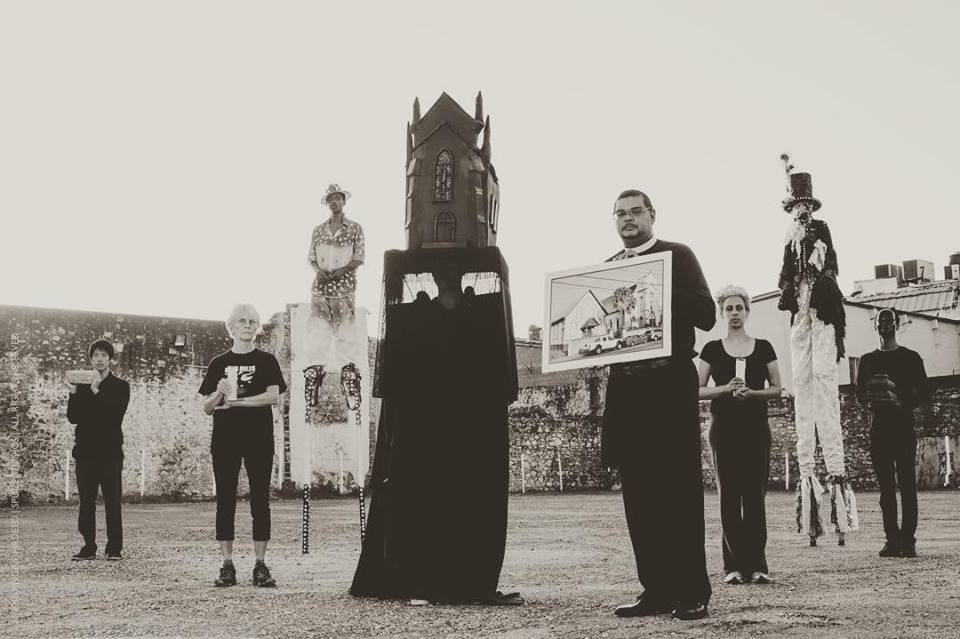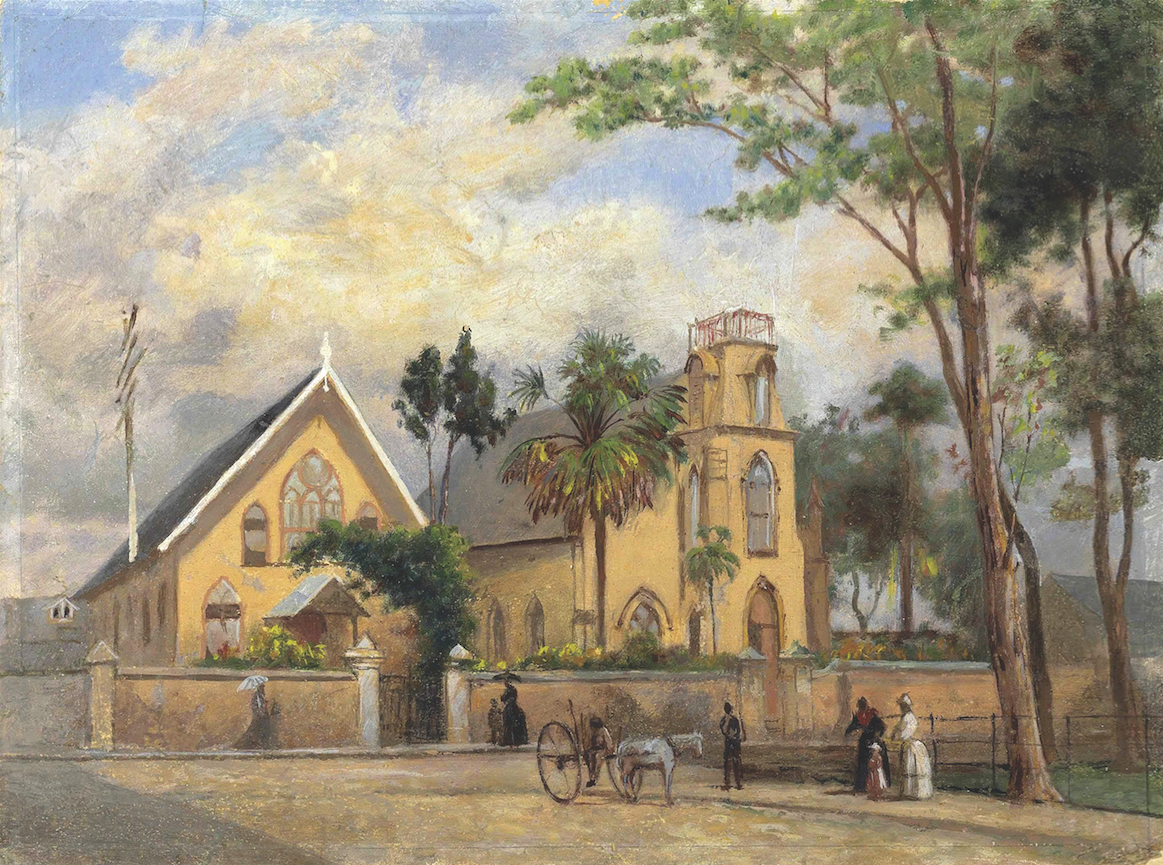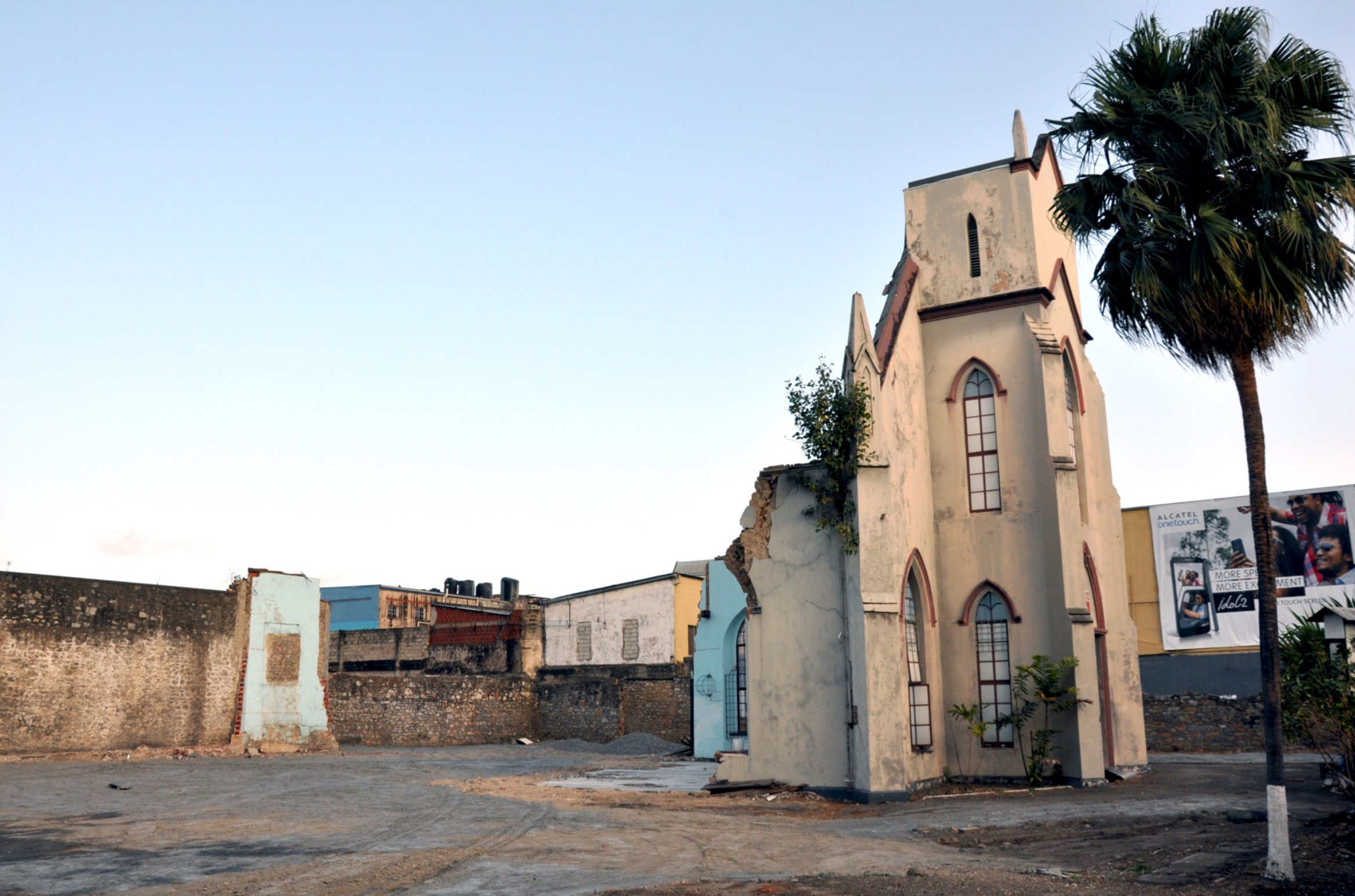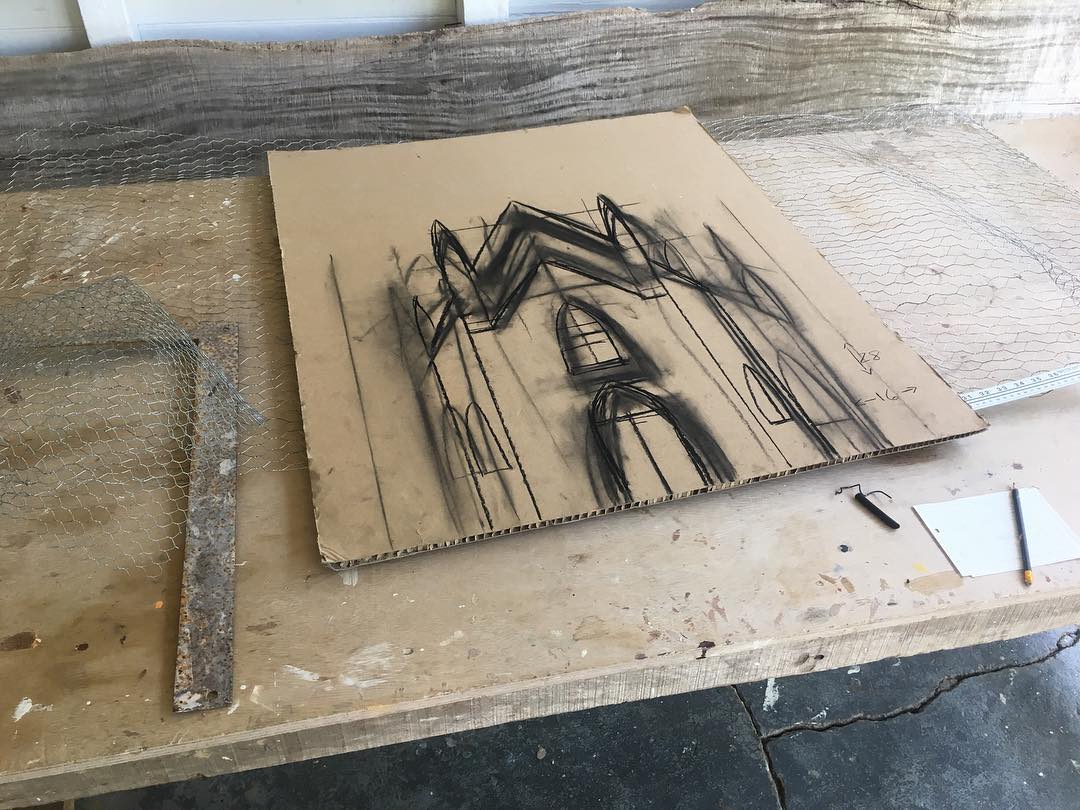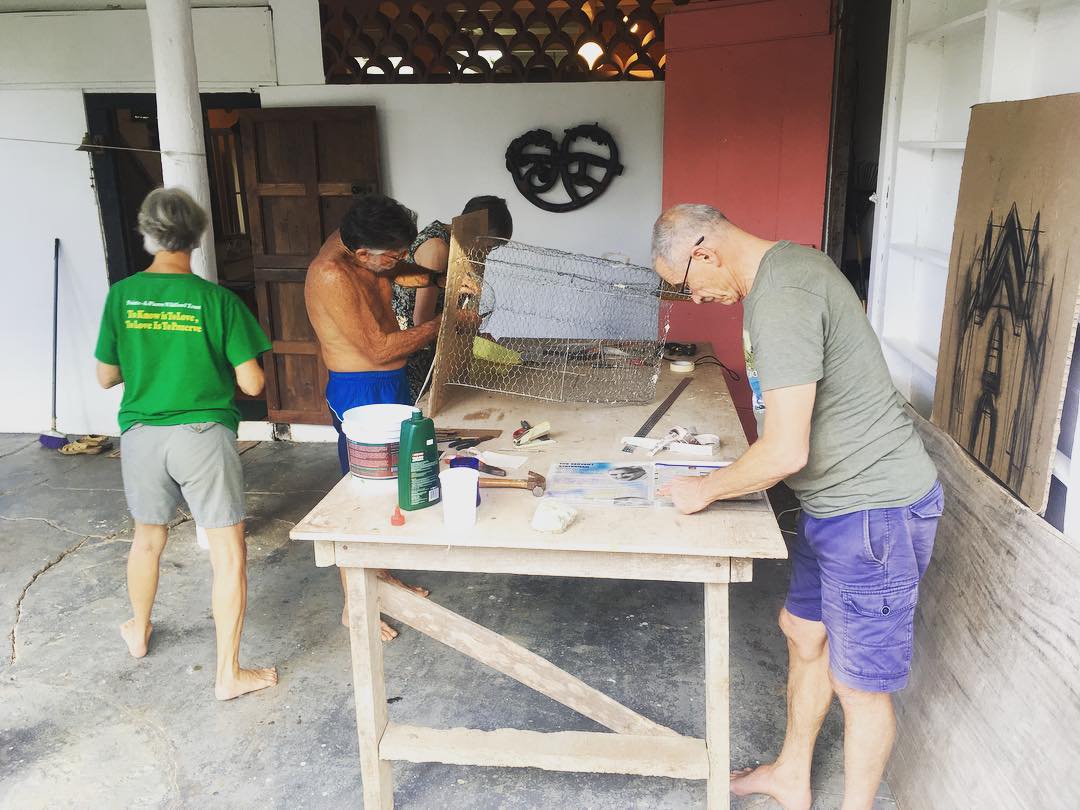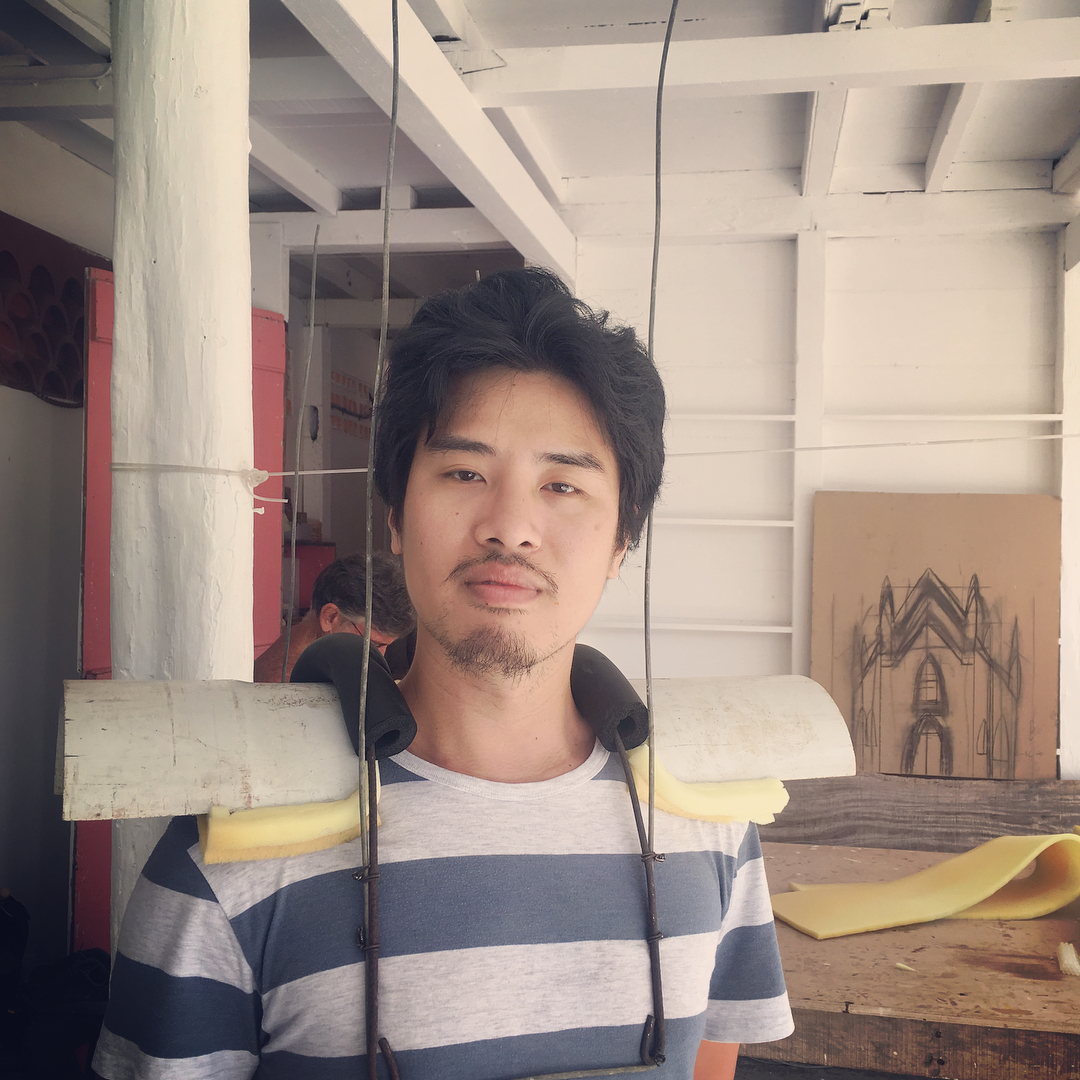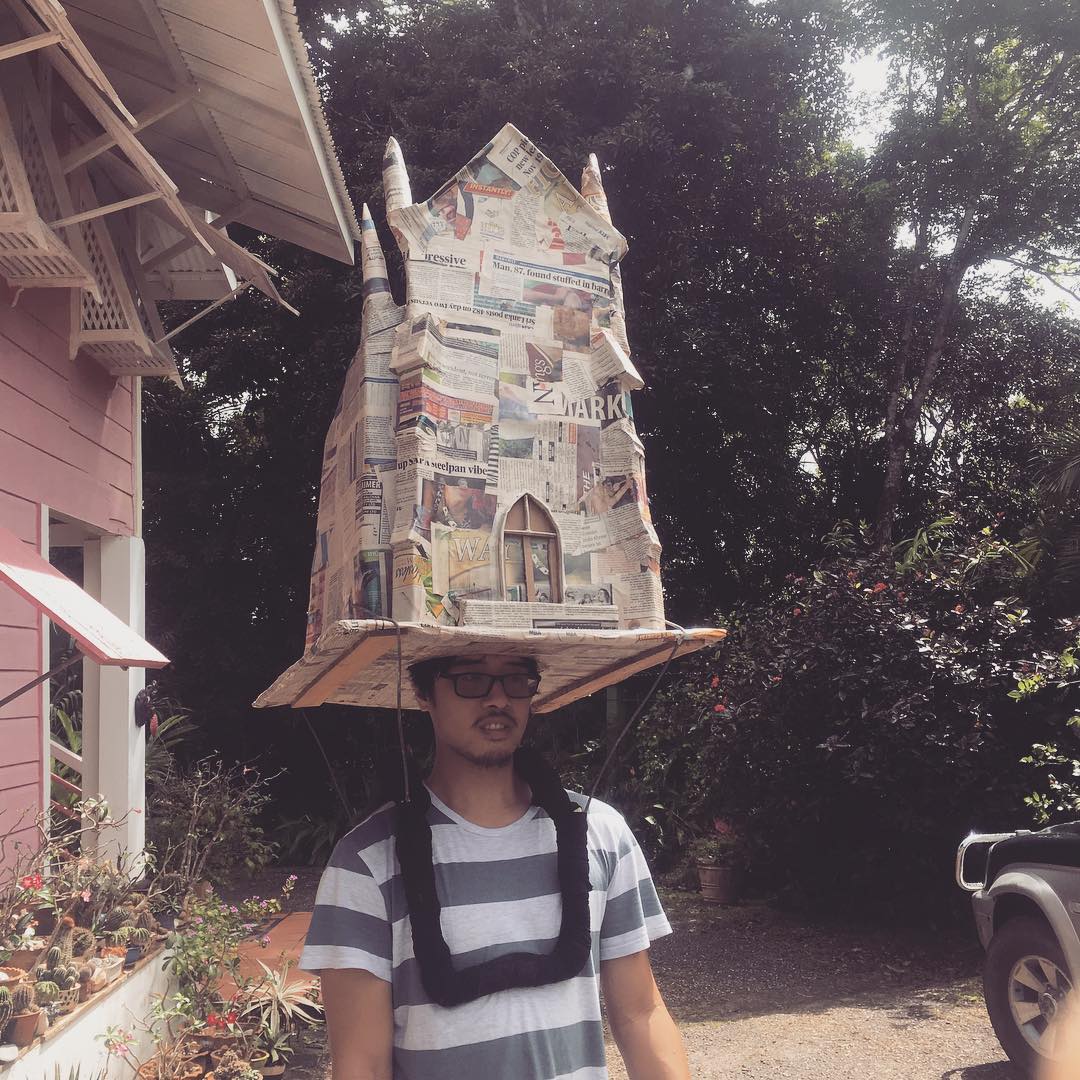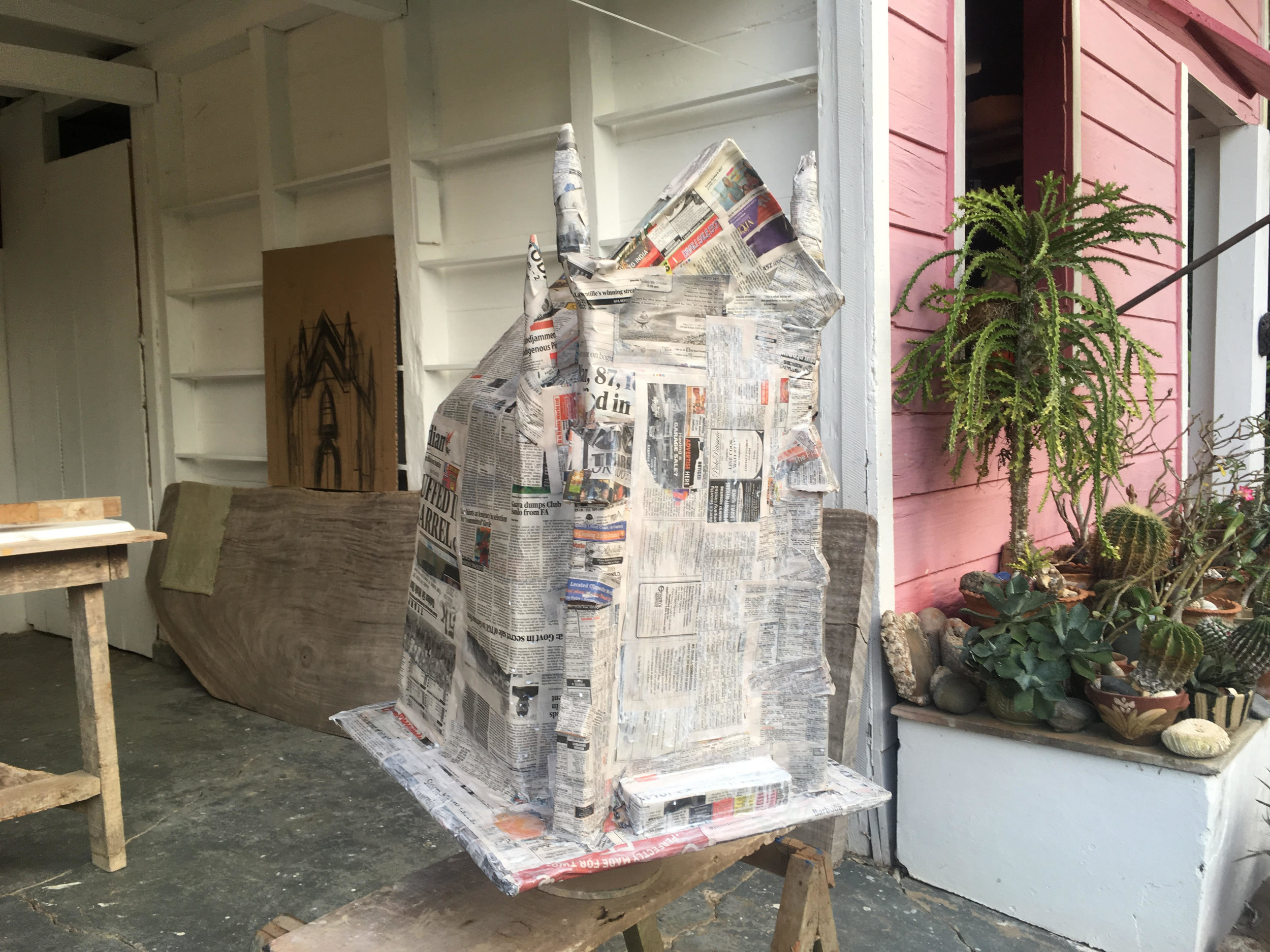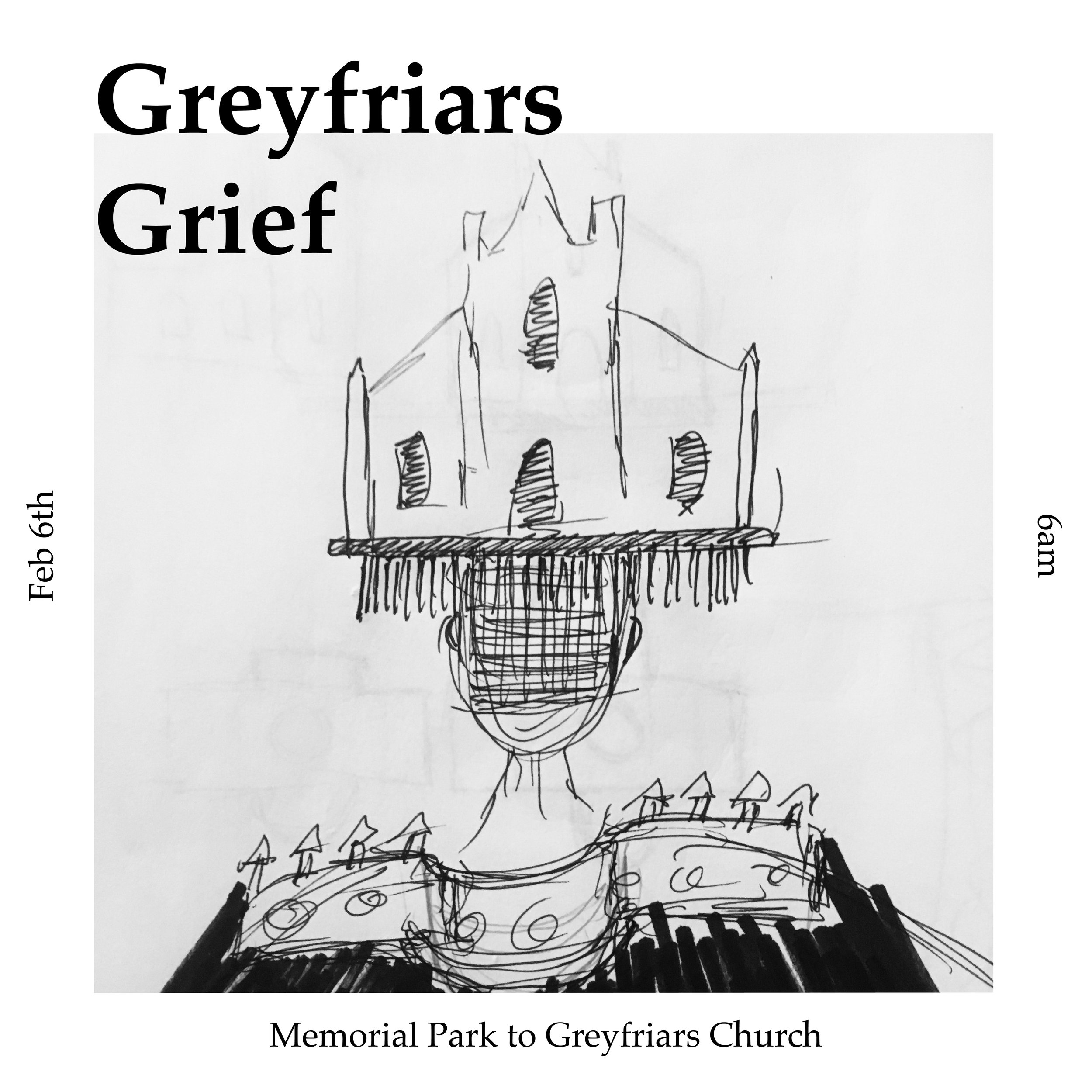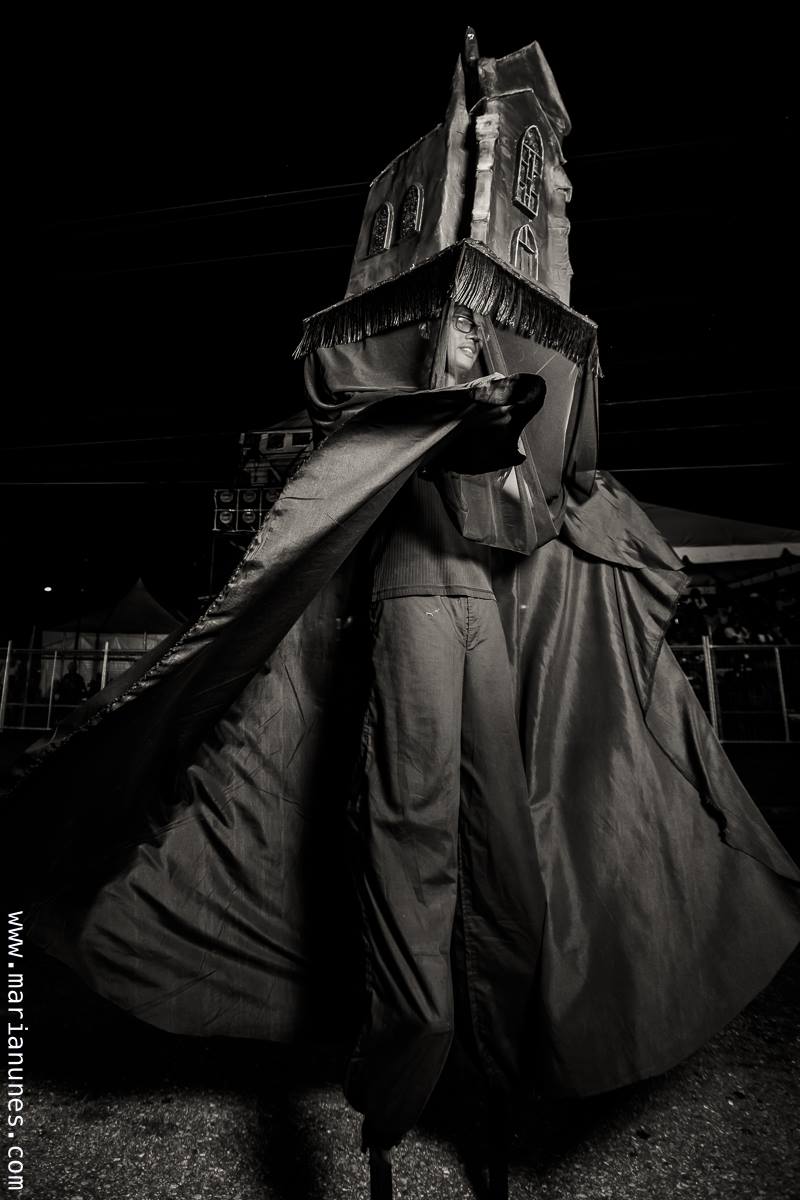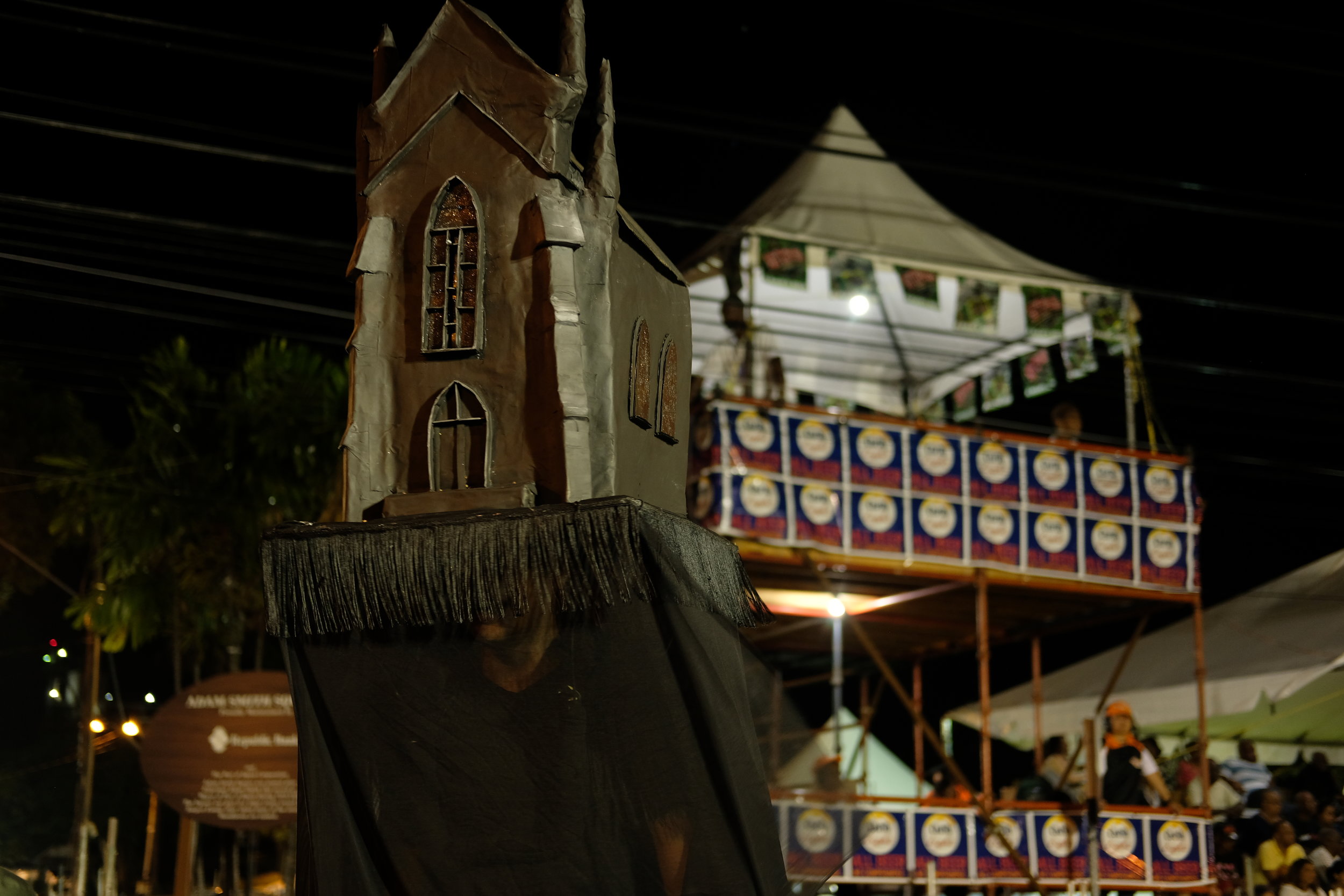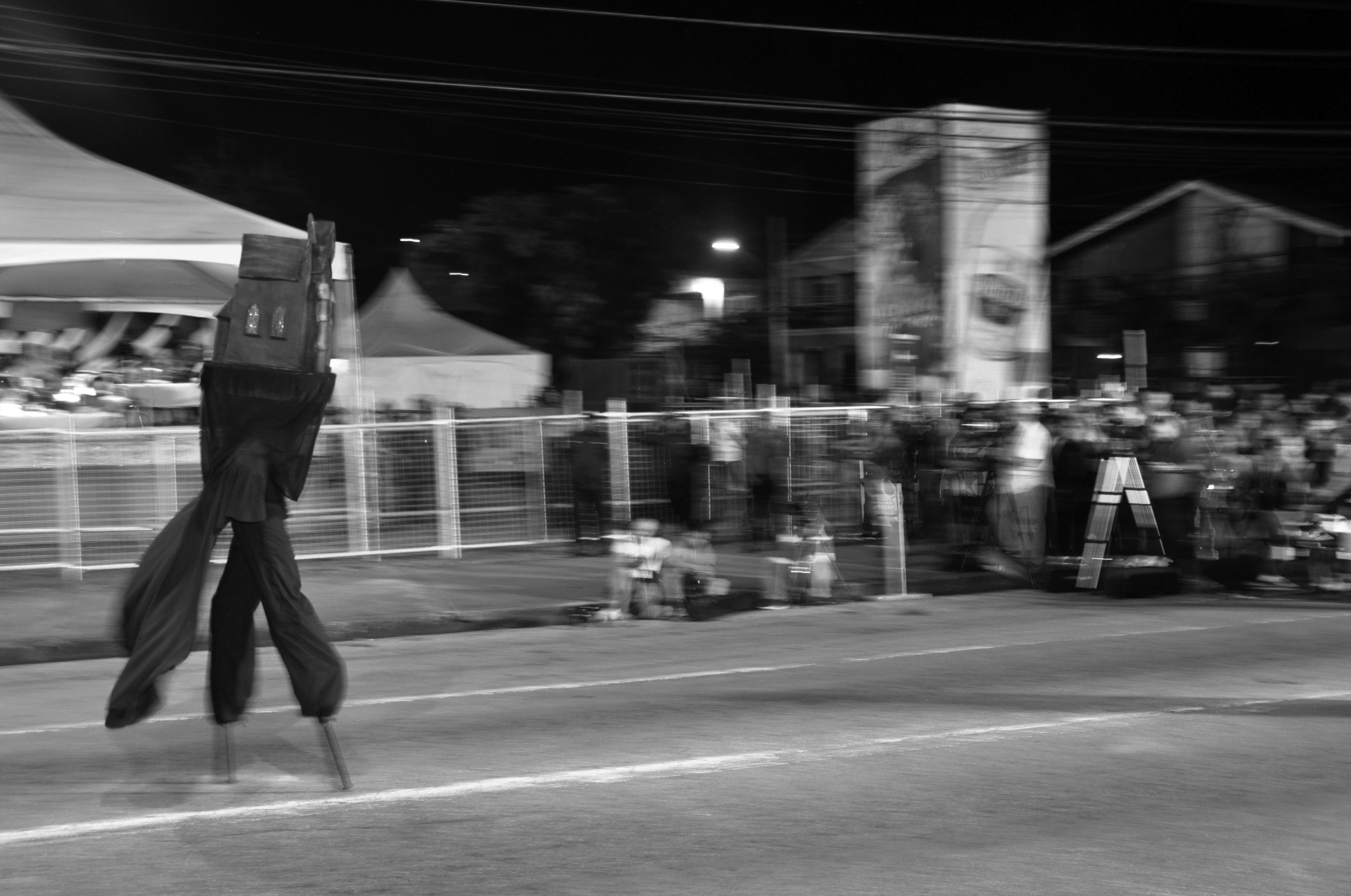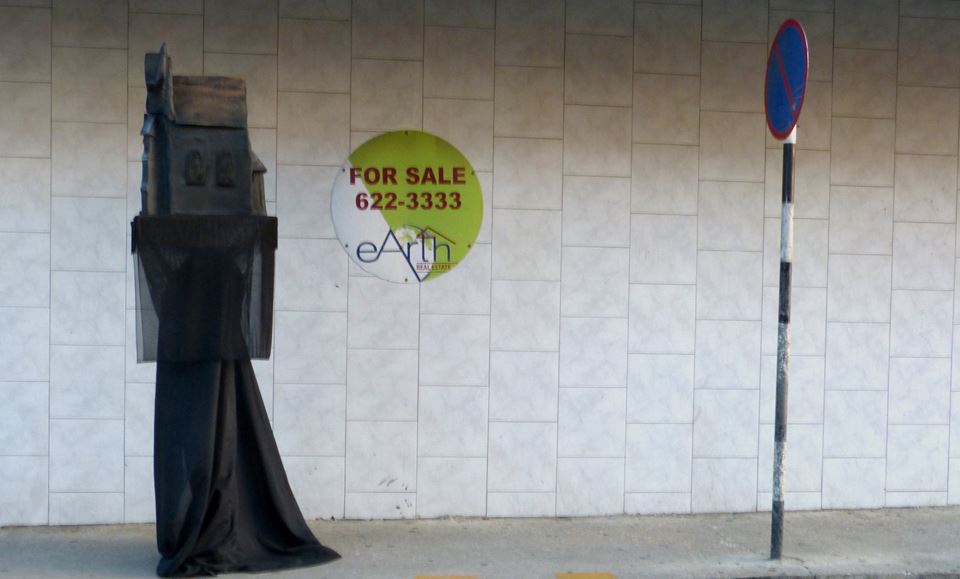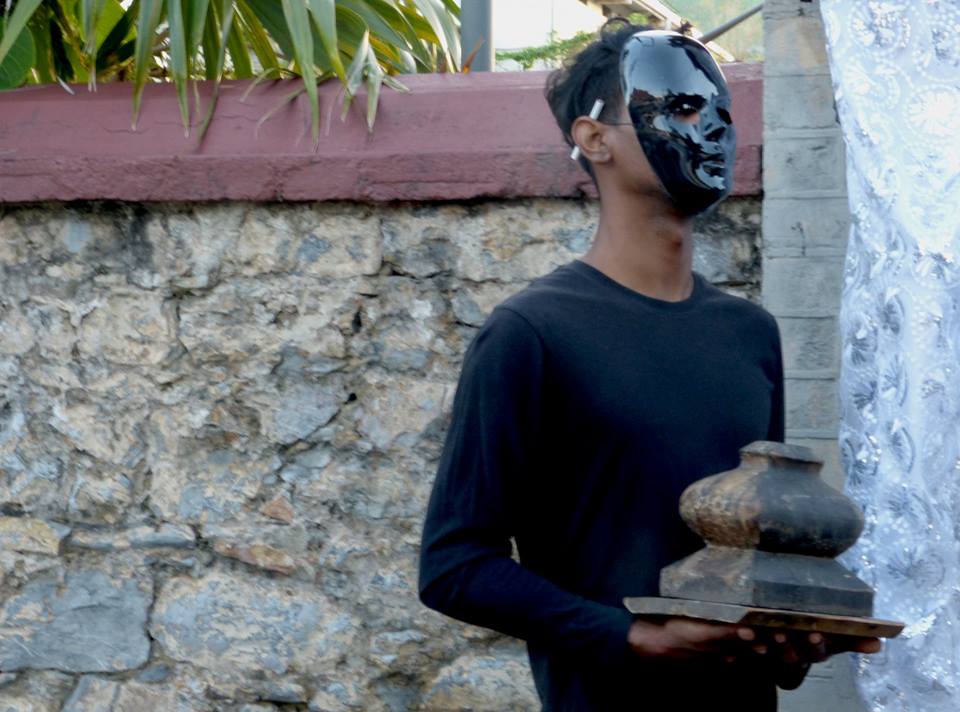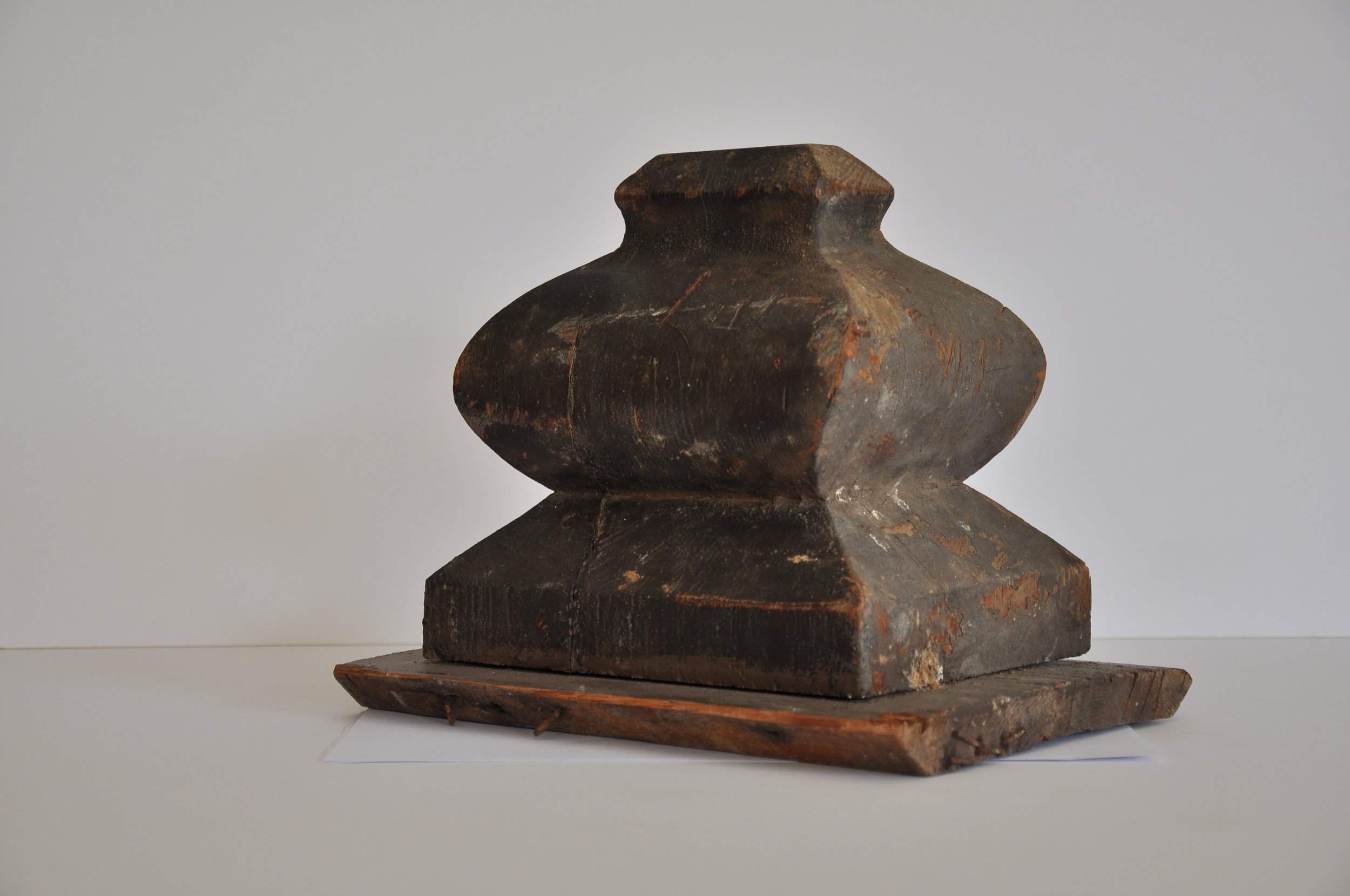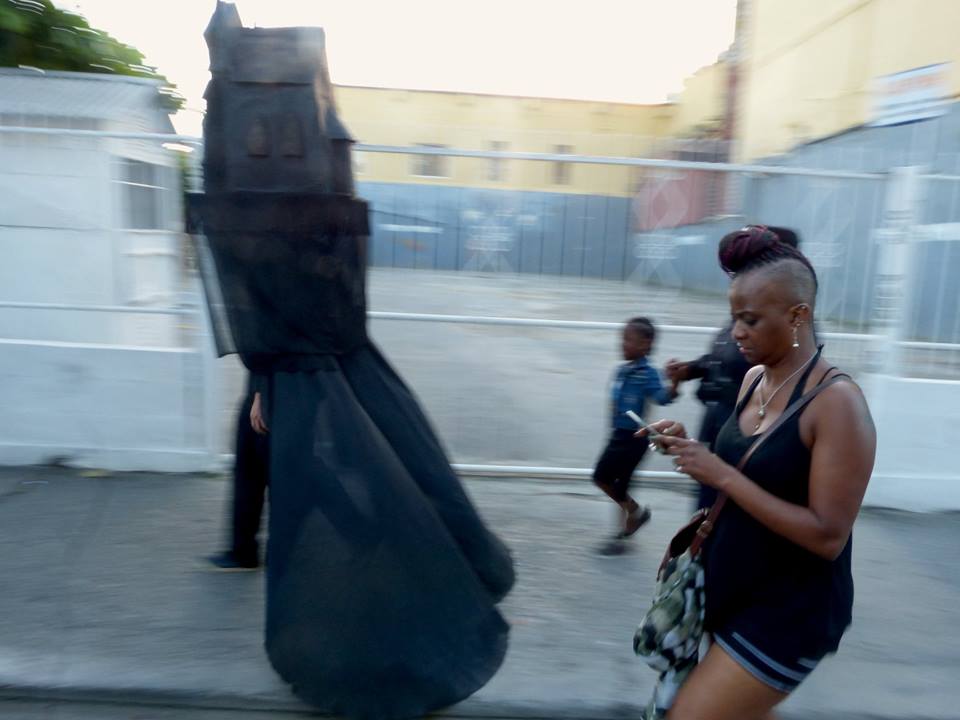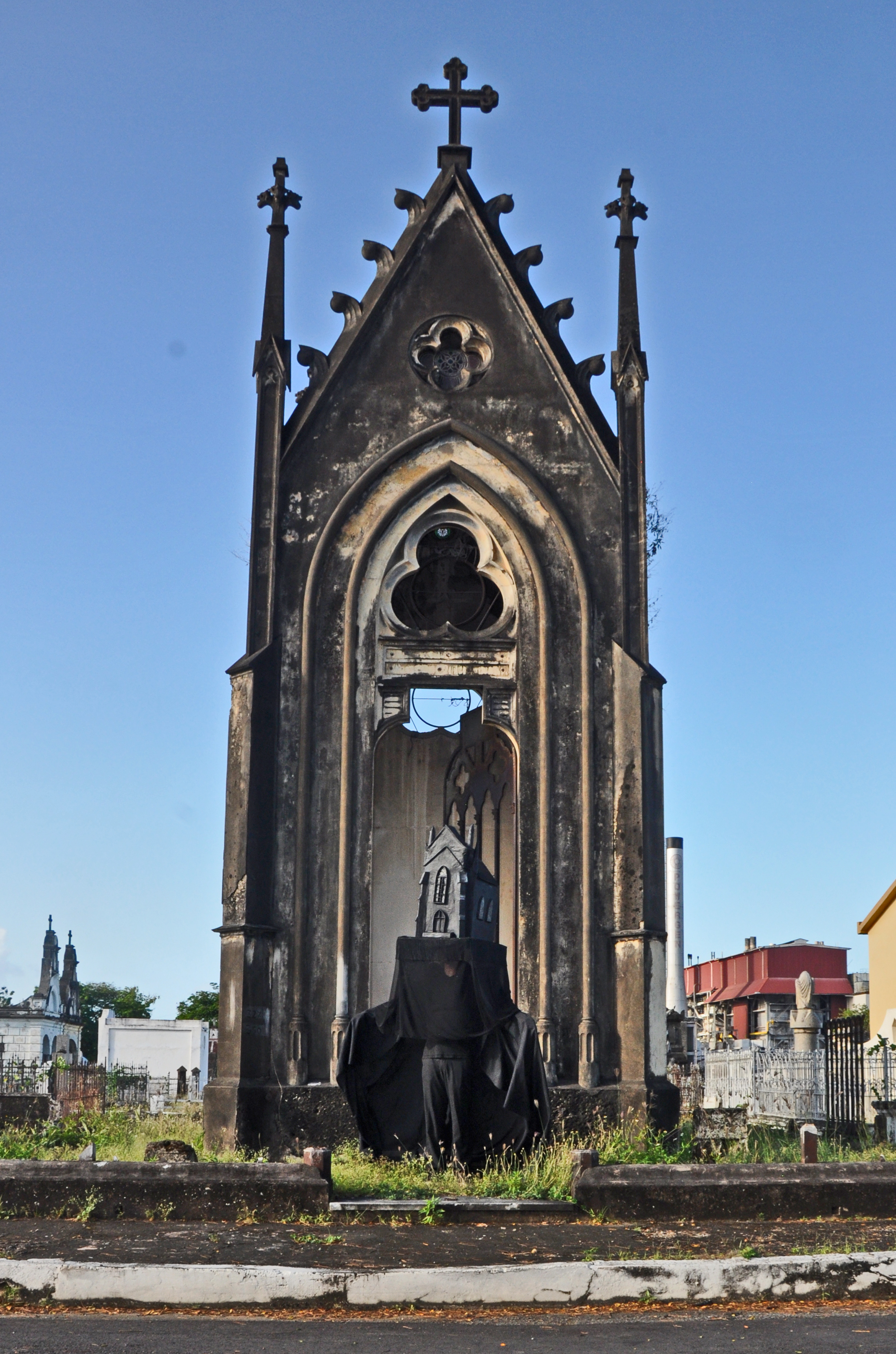Greyfriars Grief
Greyfriars Grief was a mourning 'mas'querade tribute to the life and death of Greyfriars Church tragically demolished in November 2014.The performance acted as a reminder about the dramatic demise of Greyfriars Church by conjuring up the spirit of the church. Preventing its second death of being forgotten. Only cast iron gates now that look into the barren car park where the church once stood and its congregation held service since January 21st, 1838.
The main inspiration for the costume based on the traditional funeral attire worn by women during the Victorian era. It was appropriate given that the church was built during this era capturing the mystique of a black veiled figure set the perfect tone for the performance. The headpiece was a simplified model of the church made with papier mâché supported by aluminium wire and wire mesh which was spray-painted black. The entire headpiece was supported by a backpack which assisted in distributing the weight of the headpiece to the rest of the body for better support. With the headpiece, there was a black cape included with trimmings similar to the ones on the rim of the headpiece. Bunty and Rory O'Connor provided guidance and assistance with the construction of the costume.
The procession began at Memorial Park and ended at the former site of the church via Frederick Street on February 6th, 2018. Reverend Clifford Rawlins who was the last priest to be ordained at Greyfriars Church lead the procession, then the two candle bearers, two church relics bearer followed by the mourning costume ringing the church bell.Ending the procession were moko jumbies (stilt-walkers) with Shervon Clarke, Alan Vaughan as Baron La Kwa and both Adrian Young and Joel Joseph from Future Jumbies.
Image Shaun Rambaran
Eulogy given by the Reverend Clifford Rawlins, outside the former site of Greyfriars Church, Woodford Square at the end of the procession:
"Greyfriars Church, founded in 1837, was the Mother Church of Presbyterianism in Trinidad. Tobago was a separate colony at that time. It was the hub and centre of all the Mission activity, both Scottish Mission and Canadian Mission activities in the North and South of the island. Greyfriars was the home of the Trinidad branch of the Anti Slavery Society and it was here that emancipation of slavery was proclaimed on August 1, 1838.
It was here that the protest against the 6 years of apprenticeship was led by the Reverend Alexander Kennedy and slaves felt at home in Greyfriars Church, whereas in other churches black people would have to sit in the back or bring their own chairs and sit in the forecourt. Greyfriars was the only Church where black people sat in the front and the white people sat at the back.
Greyfriars was the home of the first library in Trinidad and was at the forefront of a lot of justice and social activities in the country.
There was no advertisement of Sale, there was no permission granted from Town and Country Planning or City Corporation or any other body. A surreptitious deal was made between two parties. Greyfriars was sold and later demolished without permission from anyone.
And so the Presbyterian faith in Trinidad and Tobago has lost its Mother and this is what we mourn but we celebrate its heritage and we commit ourselves to be people who are concerned not about money but about people, about heritage and about faith.
So we remember and we celebrate Greyfriars Church and its work and witness continue to live in our hearts and bear fruit in our lives that She may continue to live on in another form in the years to come. For thee O Dear Greyfriars, mine eyes my vigils keep.
Glory be to the Father, the Son and to the Holy Spirit, as it was in the Beginning, now and ever shall be, world without end.
Amen".
